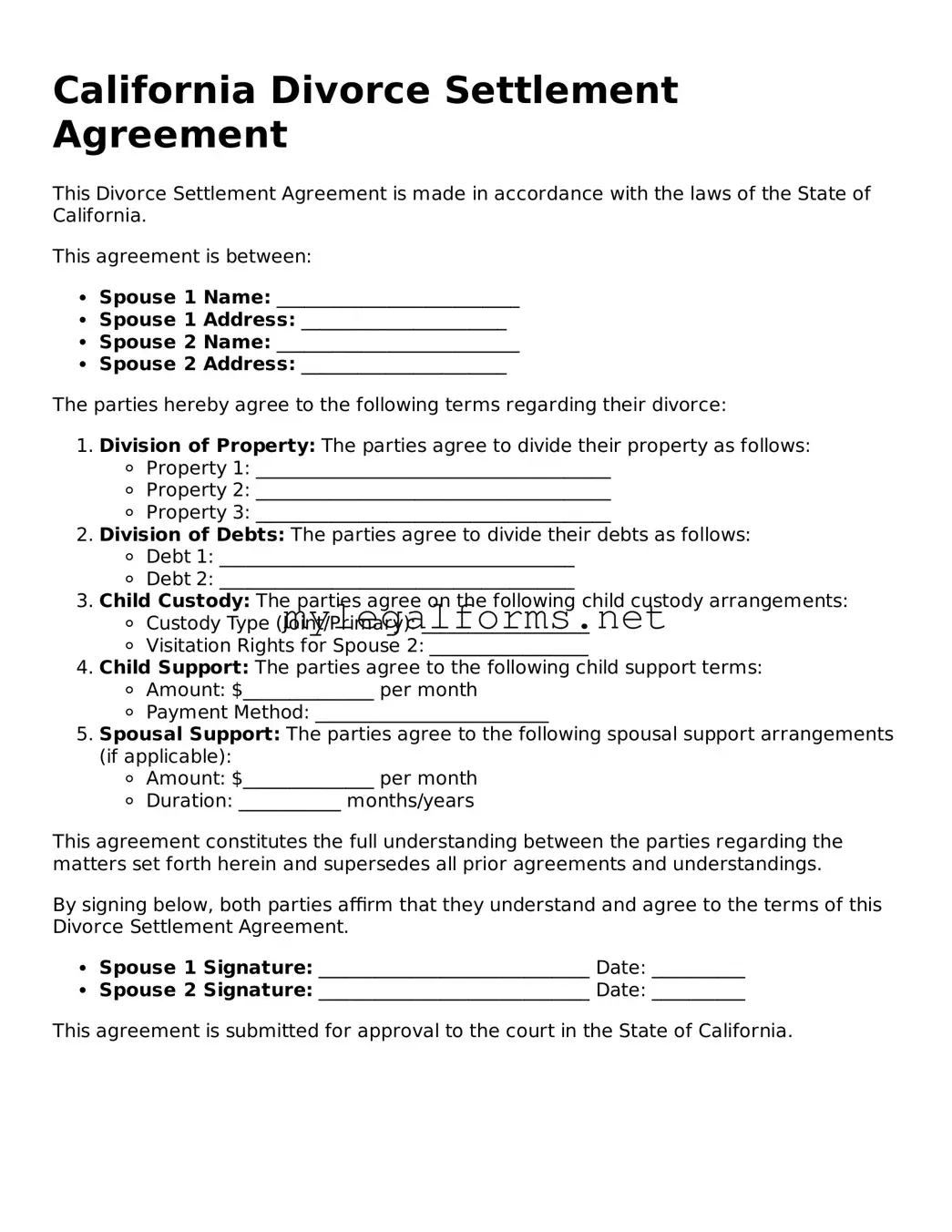Filling out the California Divorce Settlement Agreement form can be a daunting task, and many individuals make common mistakes that can complicate the process. One frequent error is failing to provide complete and accurate information. When sections are left blank or filled in with vague responses, it can lead to misunderstandings and delays. Ensuring that every relevant detail is included is essential for a smooth resolution.
Another mistake often seen is overlooking the importance of financial disclosures. Both parties must disclose their income, assets, and debts fully. Incomplete financial disclosures can result in disputes later on. It is crucial to be transparent about all financial matters to avoid complications down the line.
Many individuals also underestimate the significance of legal terminology. Misunderstanding terms such as “community property” and “separate property” can lead to incorrect assumptions about asset division. Taking the time to understand these concepts can prevent future conflicts and ensure that both parties are on the same page.
Additionally, people frequently neglect to consider tax implications when dividing assets. For instance, transferring retirement accounts can have tax consequences that may not be immediately apparent. Consulting with a financial advisor can provide clarity on these issues and help in making informed decisions.
Another common error is not addressing child custody and support adequately. Many couples assume that verbal agreements will suffice, but these need to be documented clearly in the settlement agreement. Without proper documentation, misunderstandings may arise, leading to further disputes regarding the children’s well-being.
Some individuals may also fail to specify the terms of spousal support. Leaving this section vague can create confusion and conflict later. It is important to outline the duration and amount of support clearly, so both parties have a mutual understanding of their obligations.
People sometimes overlook the necessity of signatures and dates. An unsigned or undated agreement can render the entire document invalid. It is a simple yet critical step that should not be forgotten in the final stages of the process.
Another mistake involves ignoring the state’s guidelines and requirements. Each state has its own rules regarding divorce settlements, and California is no exception. Familiarizing oneself with these regulations can prevent unnecessary complications and ensure compliance.
Finally, many individuals do not seek legal advice or assistance. While it is possible to fill out the form independently, having a legal professional review the agreement can provide valuable insights and help avoid potential pitfalls. The guidance of an expert can be instrumental in achieving a fair and equitable settlement.
In summary, being mindful of these common mistakes can significantly ease the divorce process. Attention to detail, clear communication, and seeking professional advice can lead to a more amicable and efficient resolution for all parties involved.
